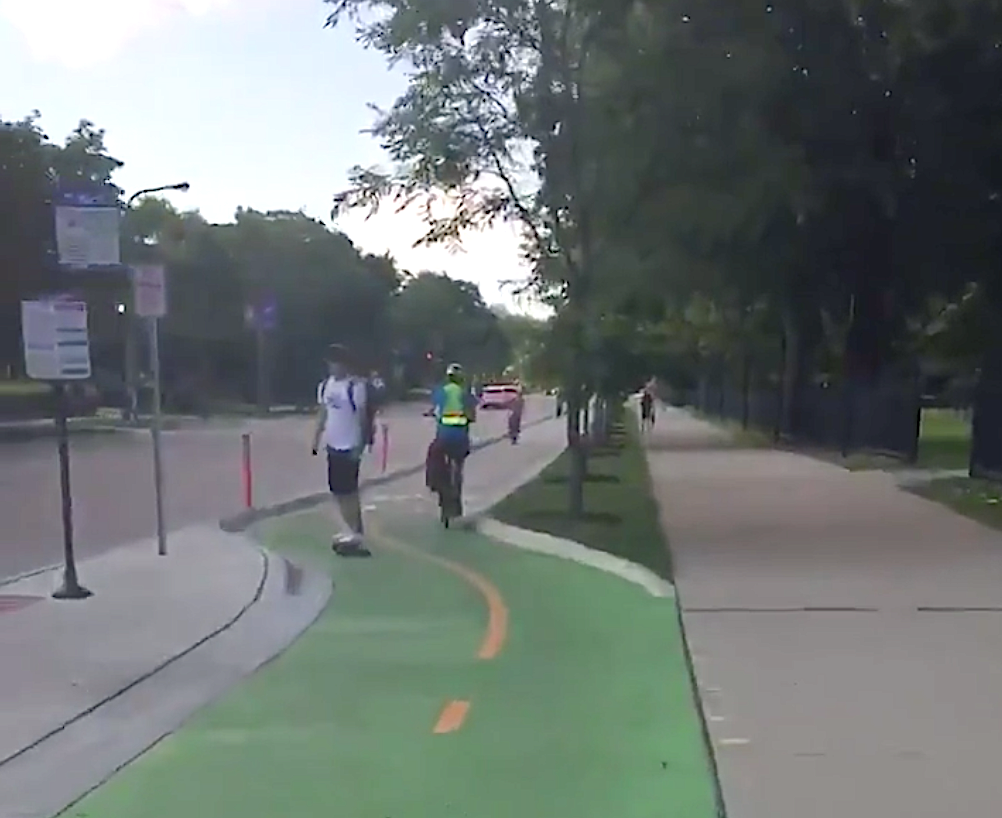Monday morning I asked my Twitter community if I should check out the protected bike lane on a trip to Evanston, Illinois, the northern suburb of Chicago that's home to Northwestern University. Unsurprisingly 100 percent of the respondents said yes.
I made my way north after a rainstorm stopped and took Chicago Avenue (Clark Street in the city of Chicago) into Evanston. After a Pace suburban bus passed me way too close for comfort as I was riding past a cemetery, I took out my phone to record a video of my experience. Adding bollards to the unprotected “bike lanes” on Chicago Avenue (I put the term in quotes when the bikeways don't offer any physical protection for riders) could easily increase comfort and safety in these lanes.
That relaxed feeling and joy I felt along this > the tension and terror on Chicago's streets pic.twitter.com/SKMcHVIJk1
— Courtney C. (she/her)🧚🏾♂️💃🏾⭕️🚴🏾♀️🌈 (@PurpleFemmedigo) July 29, 2019
As I passed South Boulevard a solo driver in a minivan honked at me and passed way too closely. My choice was to bike in the door zone -- putting myself at risk of striking an opened car door -- or face the wrath of drivers. I held my own slightly out of the door zone as drivers went around me without honking or passing too closely.
After I made a quick visit to Dave's Down to Earth Rock Shop, I attached my phone to the back of my bike and recorded a short live stream of my ride. I had no idea how to get to Evanston's protected lanes.
I thought about the contrasting experience of biking and driving. Drivers can drive around lost or aimlessly without any concerns about being injured or killed. I have to think about which routes put me in contact with the fewest drivers, which keeps me safer and exposes me to less fumes.
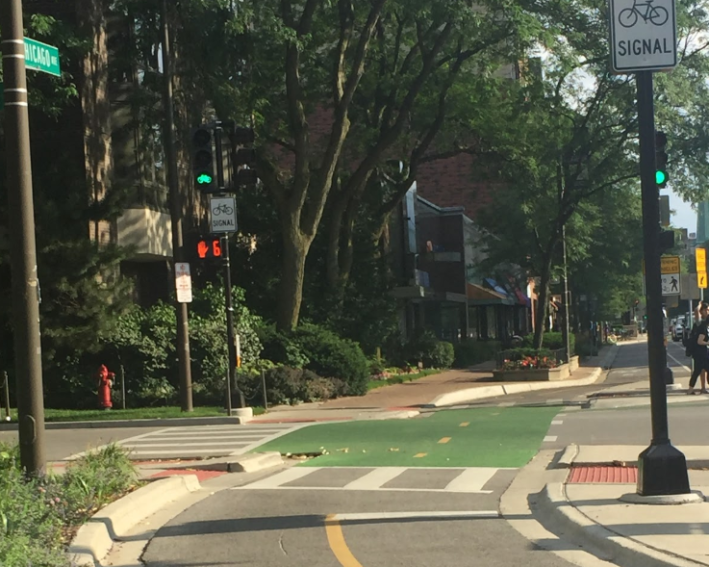
I made it back to Chicago Avenue without incident and marveled at the intersection treatment at Chicago and Church Street.
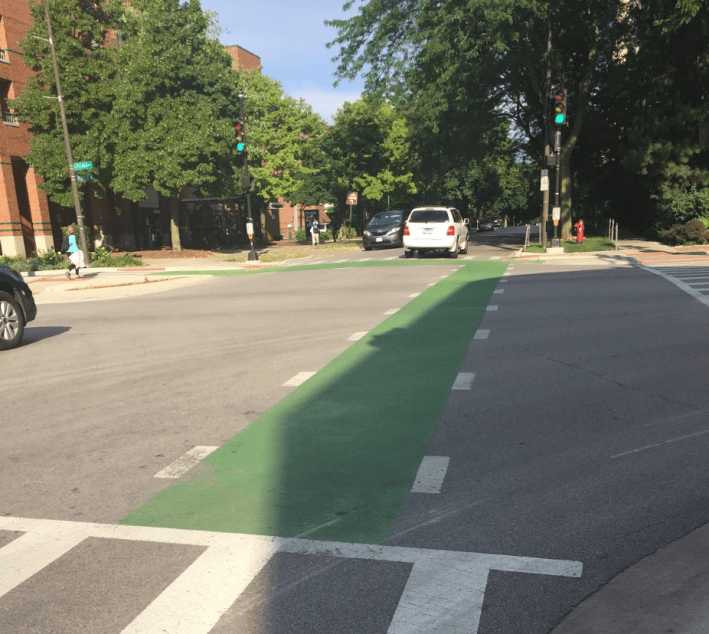
The green paint makes people on bike highly visible through the intersection and also helps raise drivers' awareness of people crossing the street on foot.
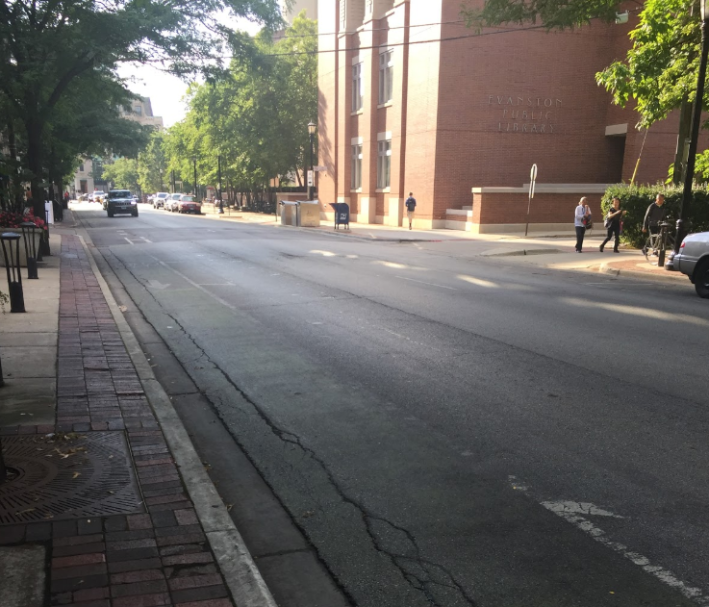
Above is the intersection from Church. As you can see the green paint ends and folks on bike no longer have a lane. It was interesting to observe the difference between the bike lane on Chicago and the one on Church.
The lane closest to the sidewalk is a bike lane but the green paint has long faded along with its white border. Despite the worn paint drivers stayed in their designated lanes. I would love to see the green paint again along with a physical barriers -- even plastic bollards would be helpful.
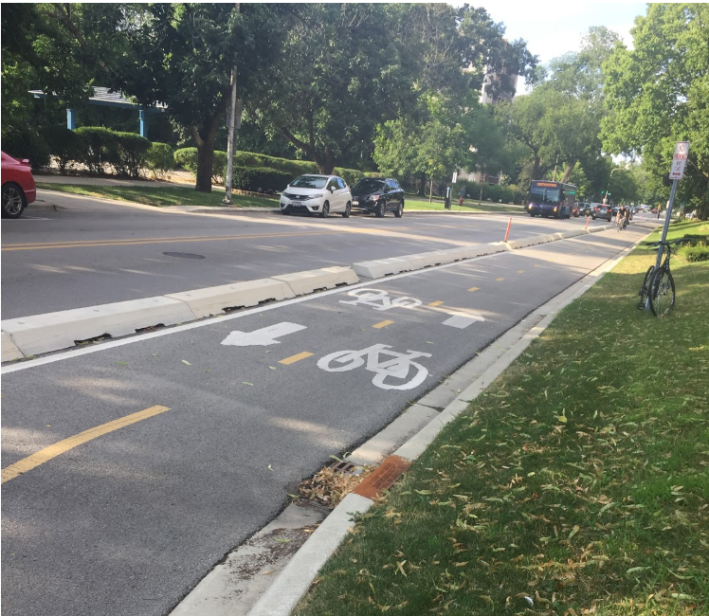
Above is the beautiful concrete barrier-protected two-way bike lane on Chicago Avenue (a couple of blocks north of Church it becomes Sheridan Road.) I would love to see more barrier-protected lanes in Chicago. As I biked I saw a mother and her two children cycling, a scooter user, and two children biking unaccompanied. Protected lanes made this possible. In the city of Chicago, the majority of families that I see biking are on the Lakefront path. For me it's a rare sight to see these families in the painted lines we call "bike lanes" that offer physical zero protection from cars. More barrier-protected bike lanes lead to a wider variety of folks on bike.
